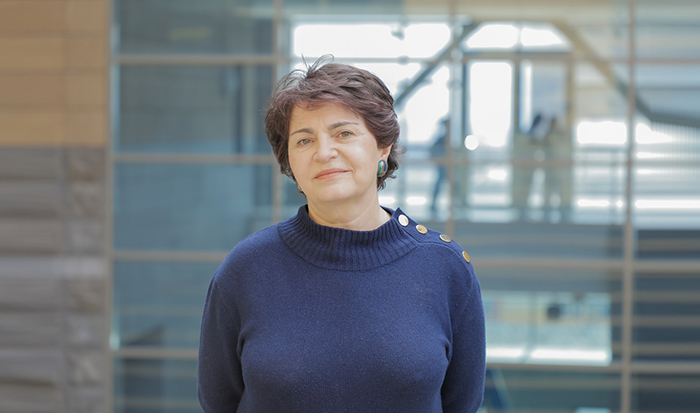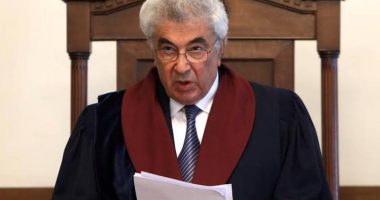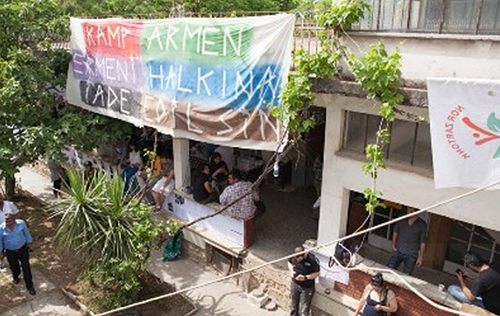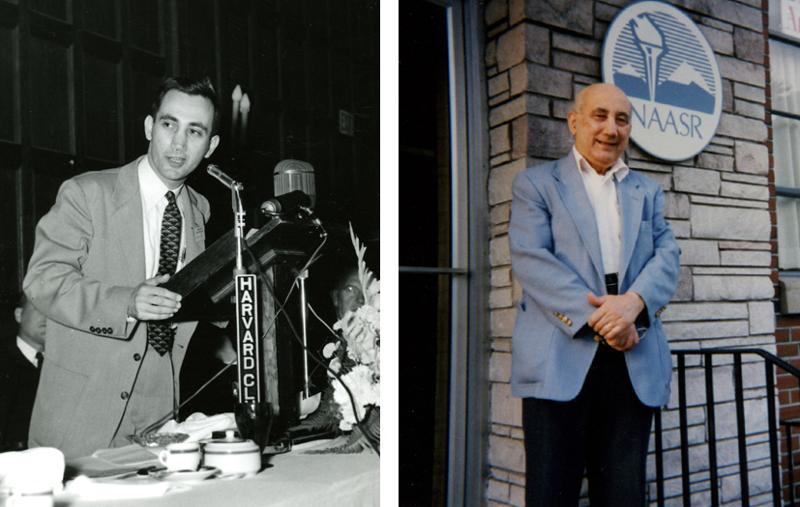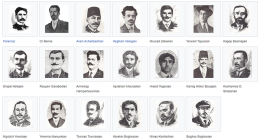YEREVAN — The American University of Armenia (AUA) is pleased to announce that Dr. Narine Sarvazyan has been named to the AUA William Frazer Endowed Professorship. Endowed by AUA Trustee Emeritus and longtime benefactor Edward Avedisian, this professorship was created in honor of Professor William Frazer, University of California (UC) Provost and Senior Vice President Emeritus, Academic Affairs, and Professor Emeritus, UC Berkeley Department of Physics. Dr. Frazer served as the inaugural Chairman of the Board of AUA Corporation, UC Provost and Senior Vice President of Academic Affairs, Acting Provost of UC San Diego’s Third College, and research scientist at the Institute for Advanced Study, Princeton, New Jersey.
Dr. Sarvazyan started her career at Moscow State University, where she received her bachelor’s and master’s degrees in physics and biophysics, respectively, and later joined the Yerevan Institute of Experimental Biology (now called the Institute of Molecular Biology NAS RA), where she received a Ph.D. in biological sciences. Within a few months after defending her dissertation, she left Armenia to pursue postdoctoral research — first in Europe and later in the United States. She then joined the faculty of Texas Tech University Health Science Center, followed by her appointment as a tenured professor at the George Washington (GW) University School of Medicine and Health Sciences, where she led an interdisciplinary program at the intersection of medicine, physics, and engineering.
Dr. Sarvazyan’s research interests range from free-radical-mediated cardiotoxicity of anticancer drugs to the adverse effects of plasticizers, hyperspectral imaging, novel medical devices, stem cell therapy, 3D bioprinting, and tissue engineering. Her scientific discoveries have been published in several prestigious journals, including Nature, Journal of Clinical Investigation, Tissue Engineering, Stem Cell Reviews, Circulation, PLoS One, American Journal of Physiology, among others. She is the recipient of a number of prestigious research and teaching awards, and has repeatedly received funding from the U.S. National Institutes of Health, the National Science Foundation, and the American Heart Association.
Asked what initially led her to her profession, Dr. Sarvazyan remarks that the decision came naturally. Raised in Pushchino, Russia, a center of biological science back in the Soviet era, she was interested in science from early childhood years. “My father led a lab in biophysical acoustics, so from early childhood, I was exposed to science,” she recalls, “ I used to visit his lab, which was a very natural environment for me to be in. I never once regretted my decision. I love what I do.”
Professor of pharmacology and physiology, Dr. Sarvazyan likes challenges. “Science is always a challenge because you have a hypothesis, you try, and in 90% of the cases, you are not right. So you have to pivot all the time to find answers,” she says, adding, “Nowadays, with the mass involvement of hundreds of thousands of people in science and technology, just finding those niches where you can make a difference is itself a challenge. That’s challenge number one. Challenge number two is getting funding for pursuing your ideas. And then comes challenge number three, that is, to actually discover something new. All these challenges are difficult to solve, but they are also inspiring, and I love to solve them.”
Dr. Sarvazyan has joined AUA to bring her expertise in research and education to Armenia. Under her leadership, the University is planning to establish the Akian BioScience Laboratory. Dr. Sarvazyan is currently based at the Akian College of Science and Engineering, and starting Fall 2023, she will be introducing new hands-on courses focusing on biomedical research. The classes will be limited to 10-12 students because all of them will be project-based and will involve supervised experimentation. She is excited to start working with AUA students, who she believes possess great potential and curiosity, “I encourage those interested in biomedical research to contact me directly or come to my office to talk because enrollment will be very limited,” she adds.
Having founded and leading a lab, Dr. Sarvazyan has been engaged in a variety of research projects. Her team at the Sarvazyan Lab at GW School of Medicine and Health Sciences works at the intersection of biology, physiology, physics, and instrumentation. “I have always had students from different professional backgrounds and walks of life, which has enhanced the interaction among them because everyone has learned something from someone else. I hope to create a similar environment here,” she says.
“Science is not easy: you have to be ready to fail many times and still have enough energy and excitement to keep going, so you can get your experiments working,” Dr. Sarvazyan remarks. She believes that only by actually doing something with their hands in the lab students can discover their passion for experimental science. She looks forward to starting such a hands-on classroom. “Students learn much better through trial and error and by doing things with their hands. And based on my experience, that is what they also enjoy the most.”
Dr. Sarvazyan is positive about the future of science in Armenia. She cautions that the resources needed to conduct competitive biomedical science are enormous, but with strong commitment of the government, local businesses, and the diaspora, she believes, it is possible to create the right environment. “We can start by creating regional biomedical research centers to fill in the gaps — it’s not an easy task, but it’s doable. It’s important to first identify the areas where we can be competitive and start to build on it. What I currently have in mind is hyperspectral imaging technology, which I believe is a very promising tool for many medical applications. This is just one of the projects I would like to implement here. It is a relatively new direction and I think it’s possible to make it successful in Armenia,” she elaborates.
Successful in her academic and professional career, Dr. Sarvazyan considers balancing family and academic career to be her most outstanding accomplishment. “The fact that I managed to stay married for 40 years and raised two successful children while creating a research environment that helped many outstanding students achieve their career goals — I think it’s a pretty good accomplishment,” she smiles.
Apart from sharing her professional expertise with AUA students, Dr. Sarvazyan, together with her husband, Dr. Artur Petrosian, AUA’s former Computer Science department chair, also have financially invested in education — they are AUA pillars. “We have always felt a strong connection with Armenia. We both believe that science, education, and research are what make a country stronger. I think many people would agree that AUA does a great job educating the new generation of Armenian youth. We believe that this institution really can benefit from our input and investment. By giving back to Armenia, we’re investing in our future,” she remarks.

